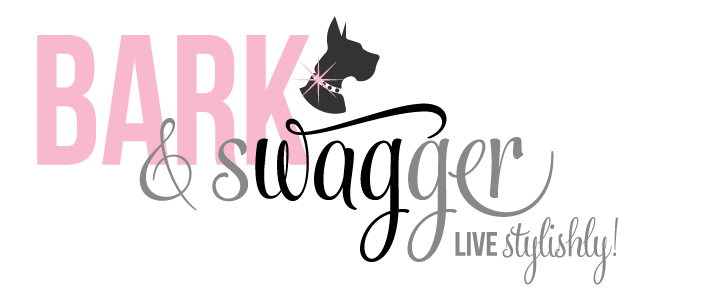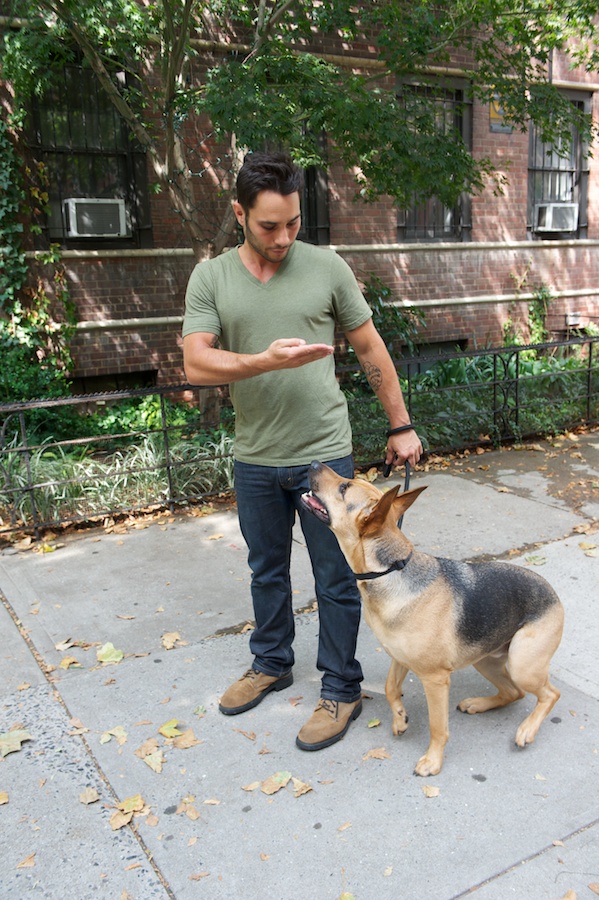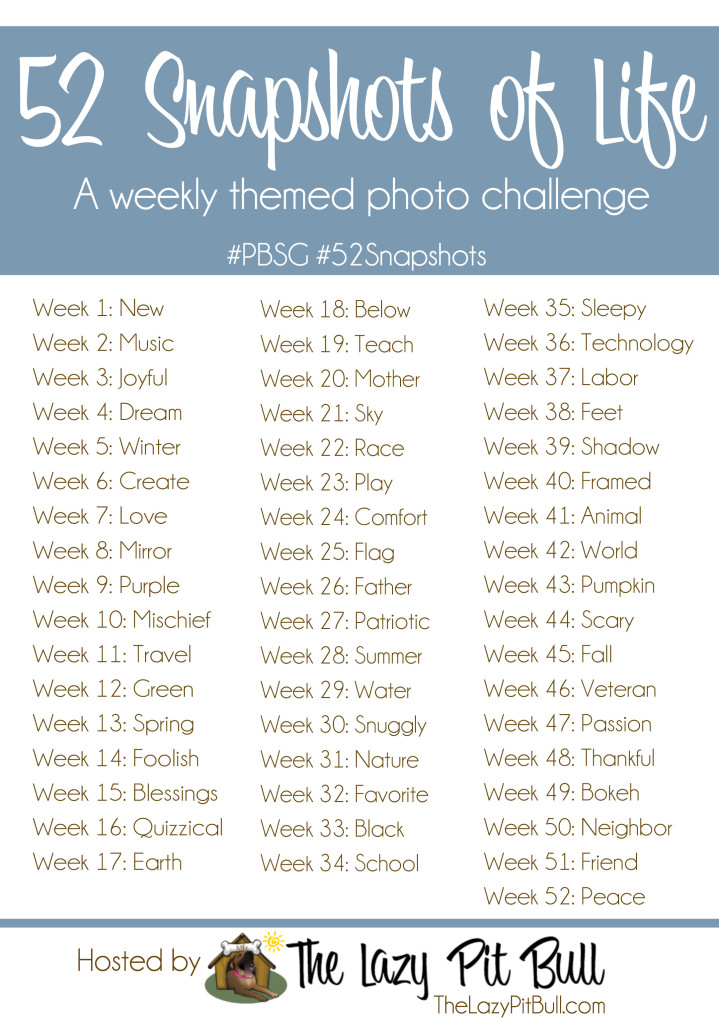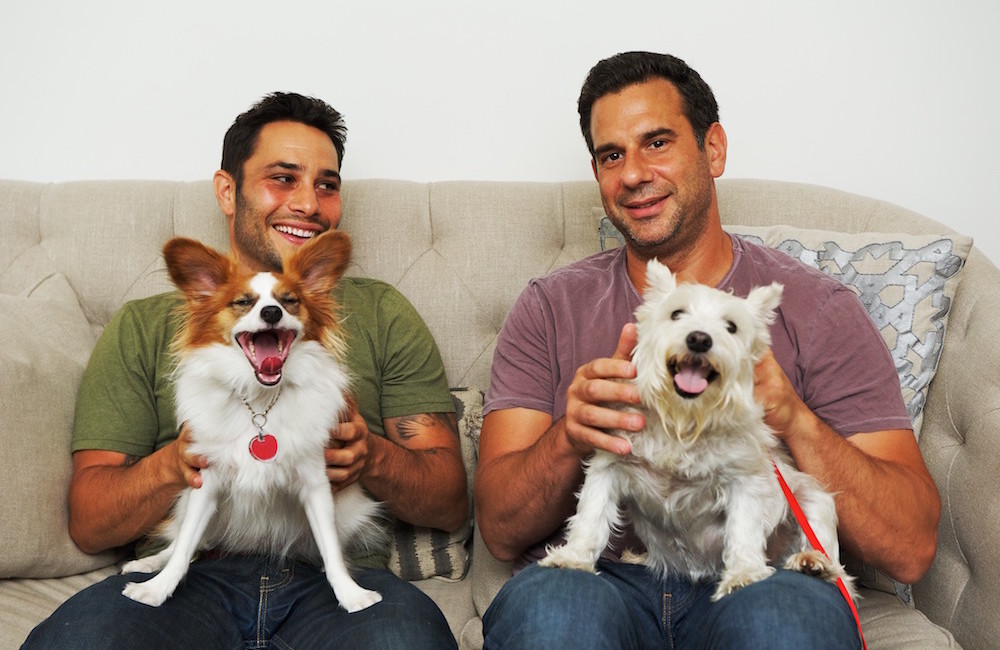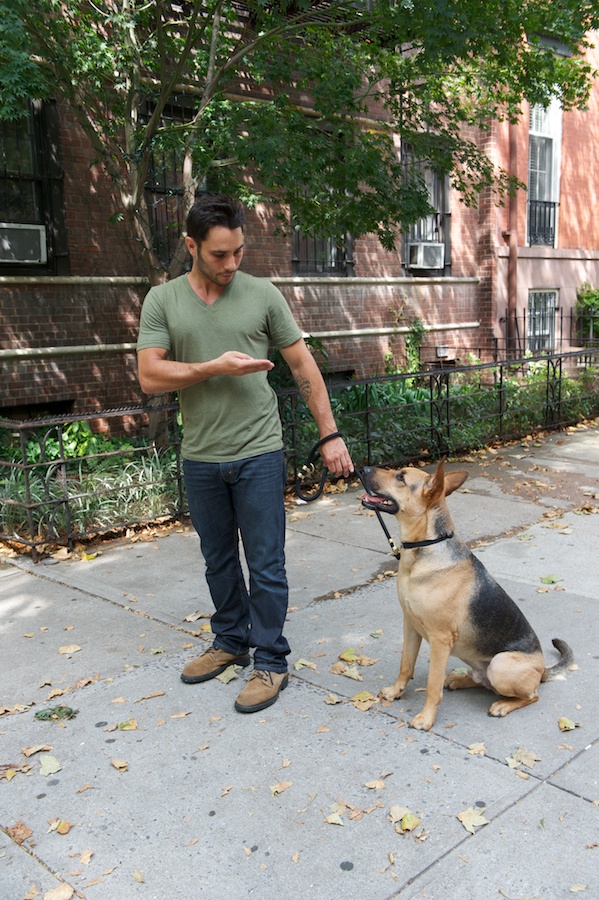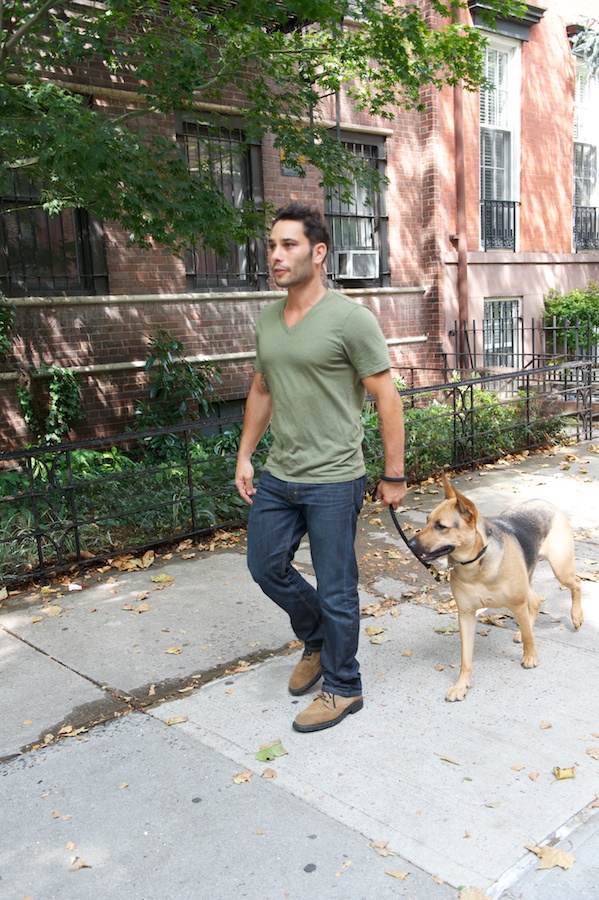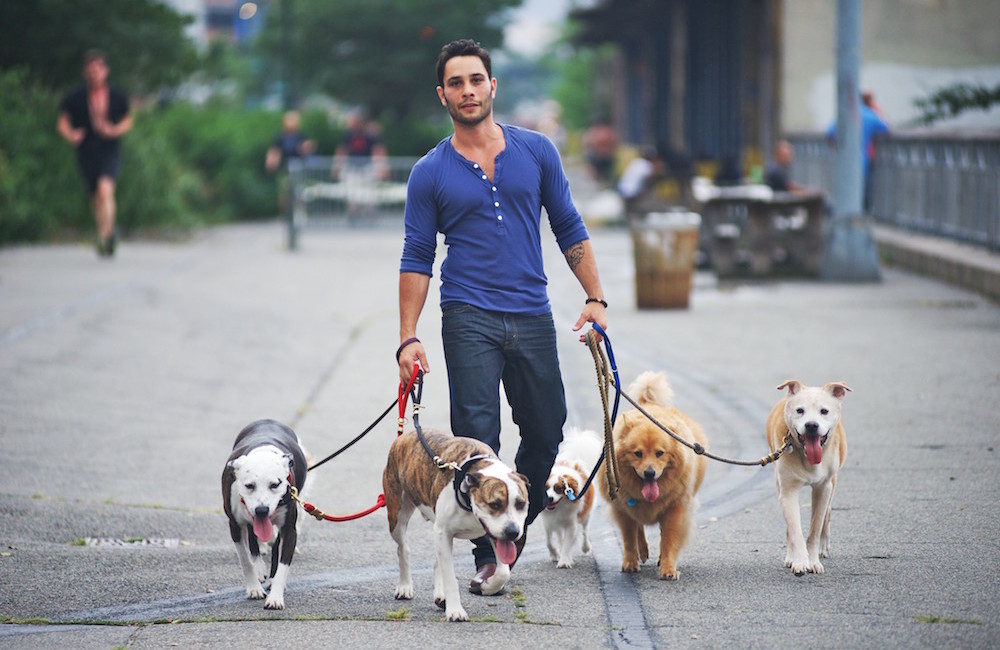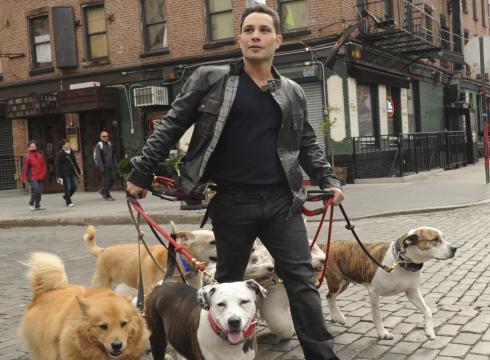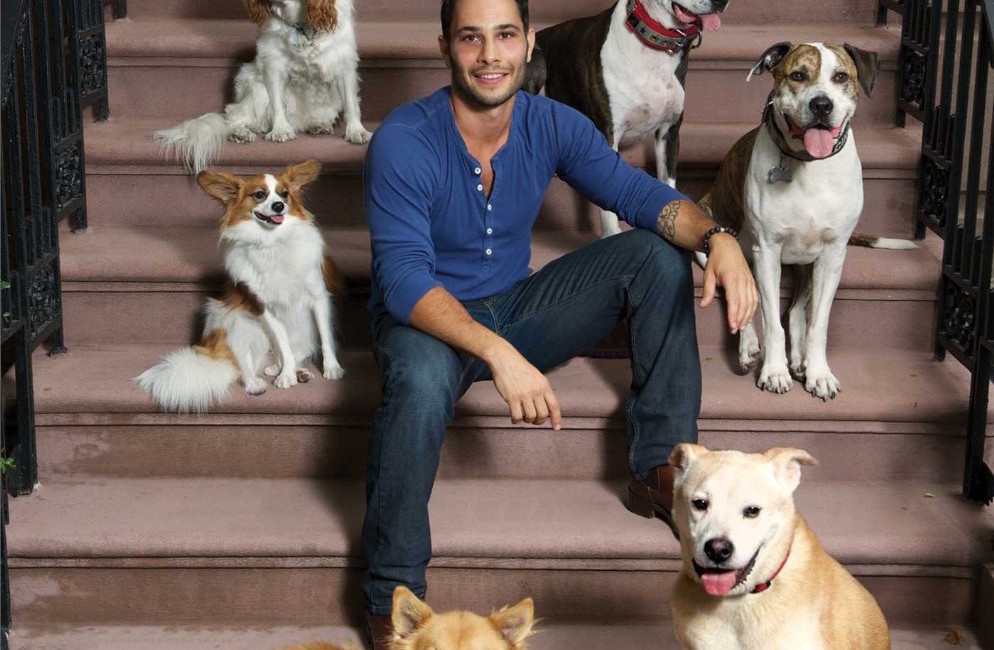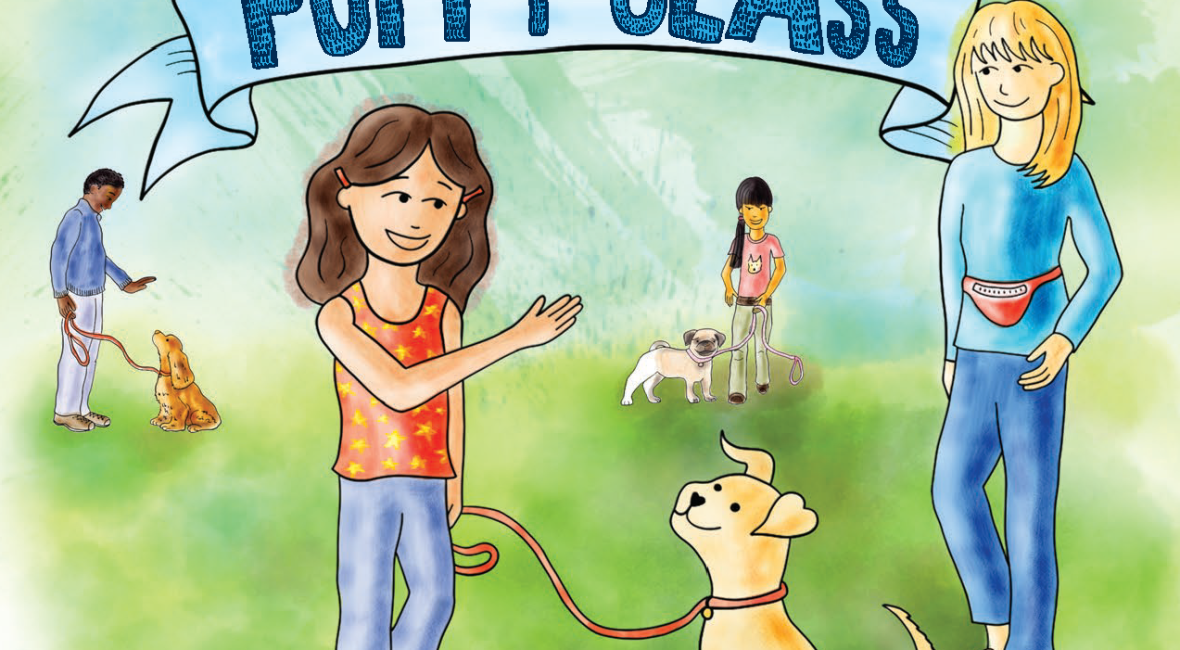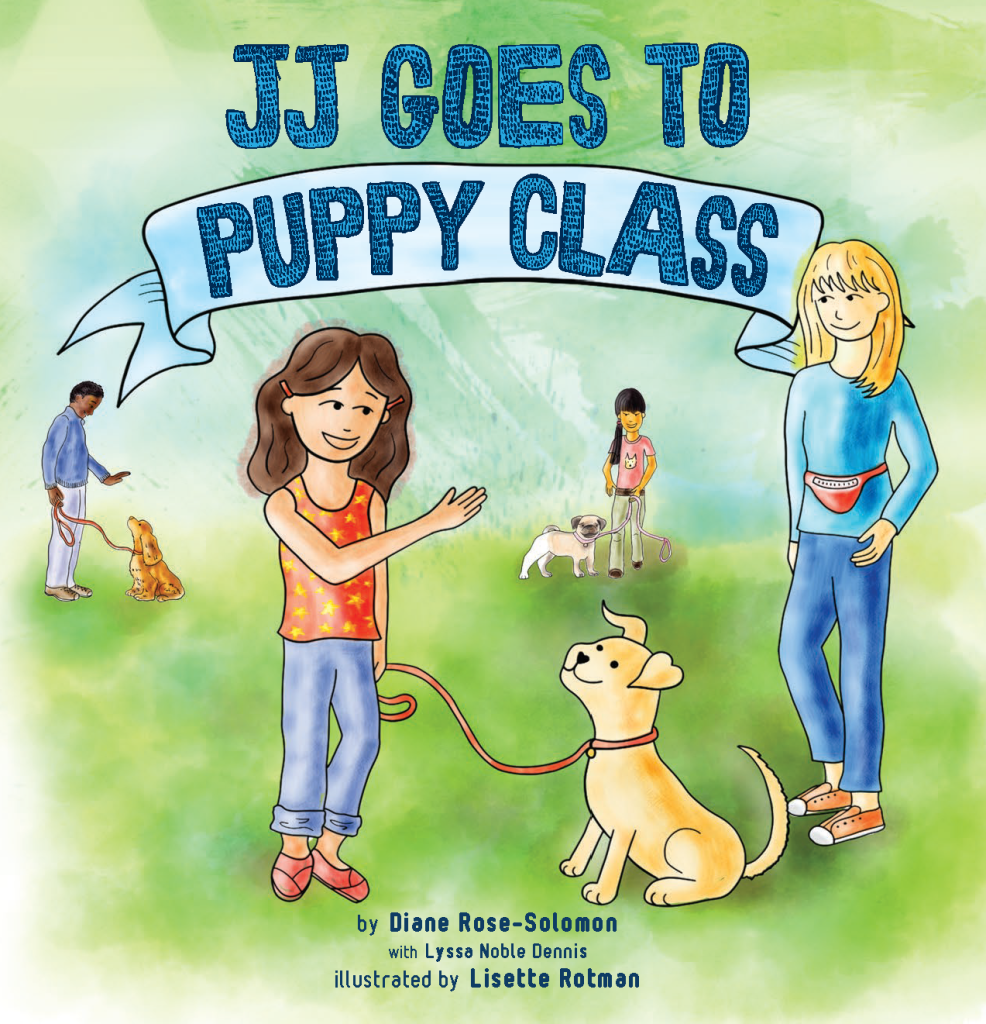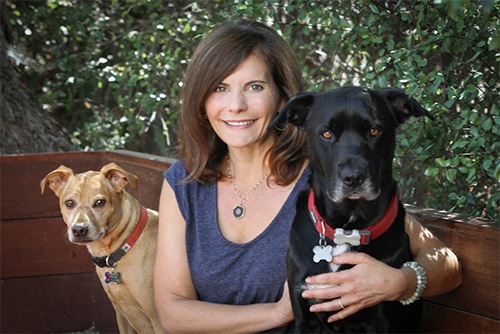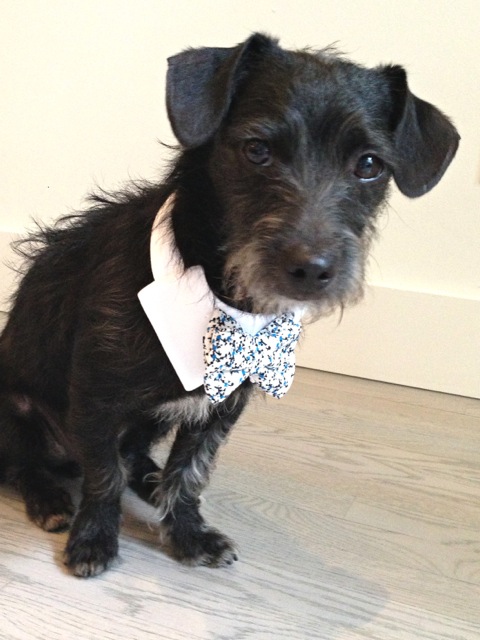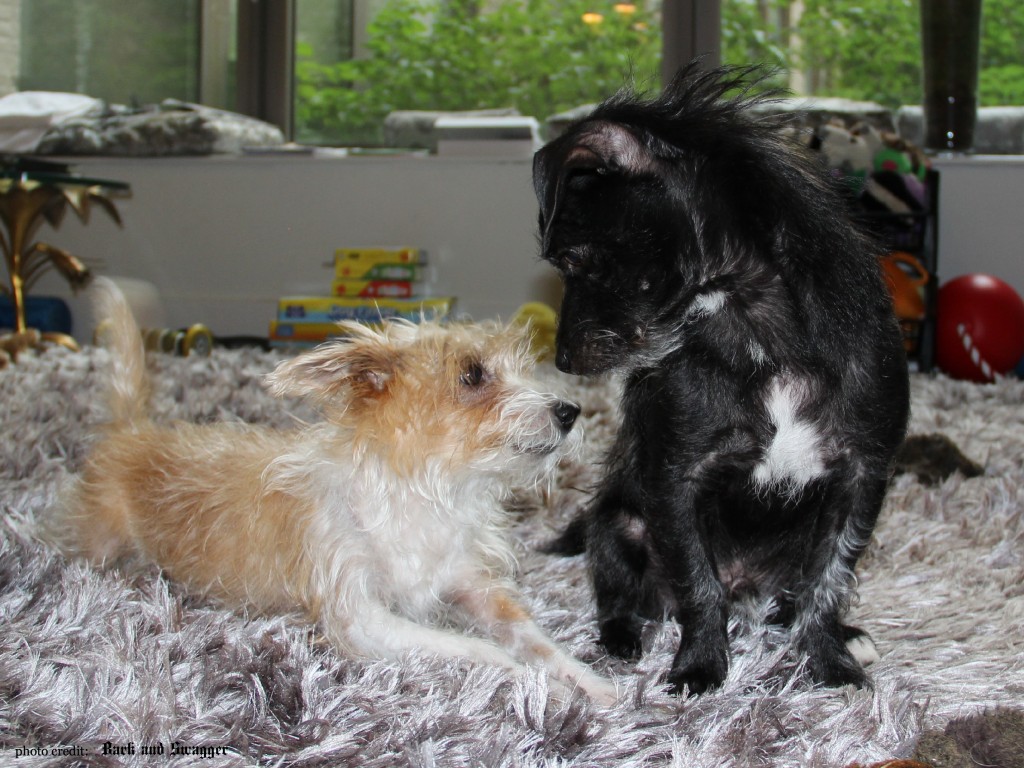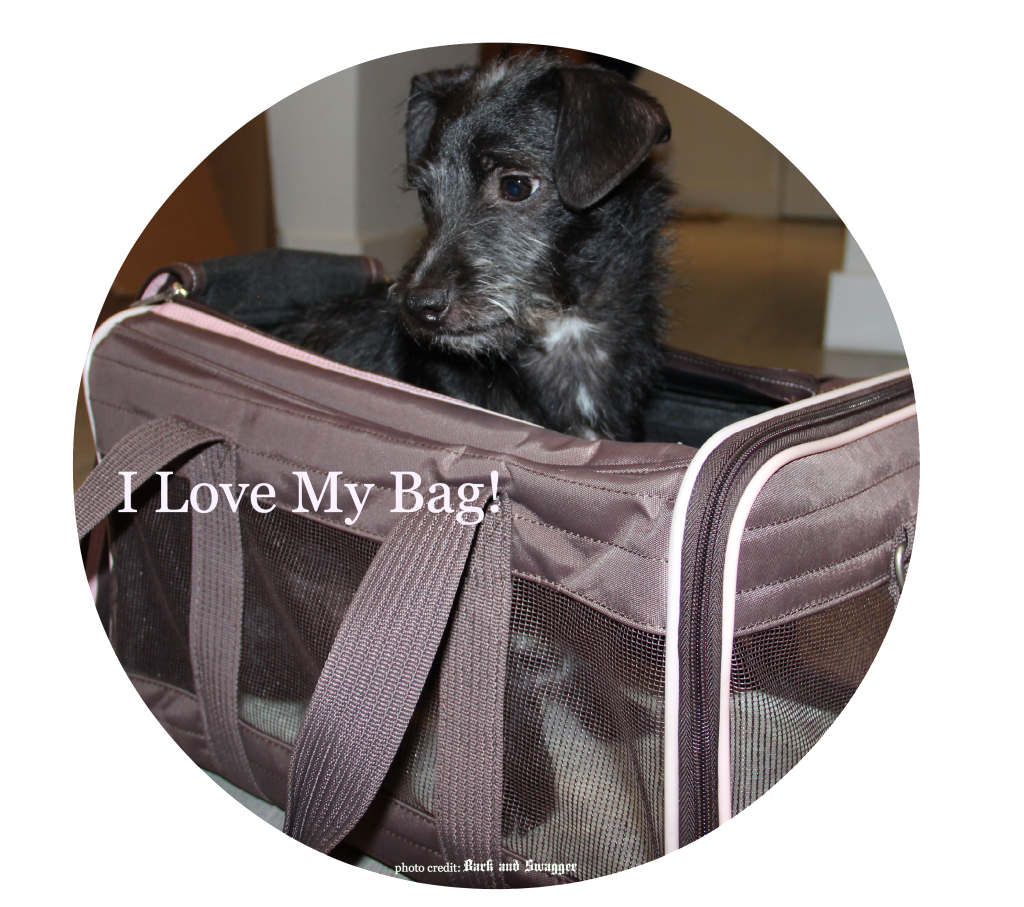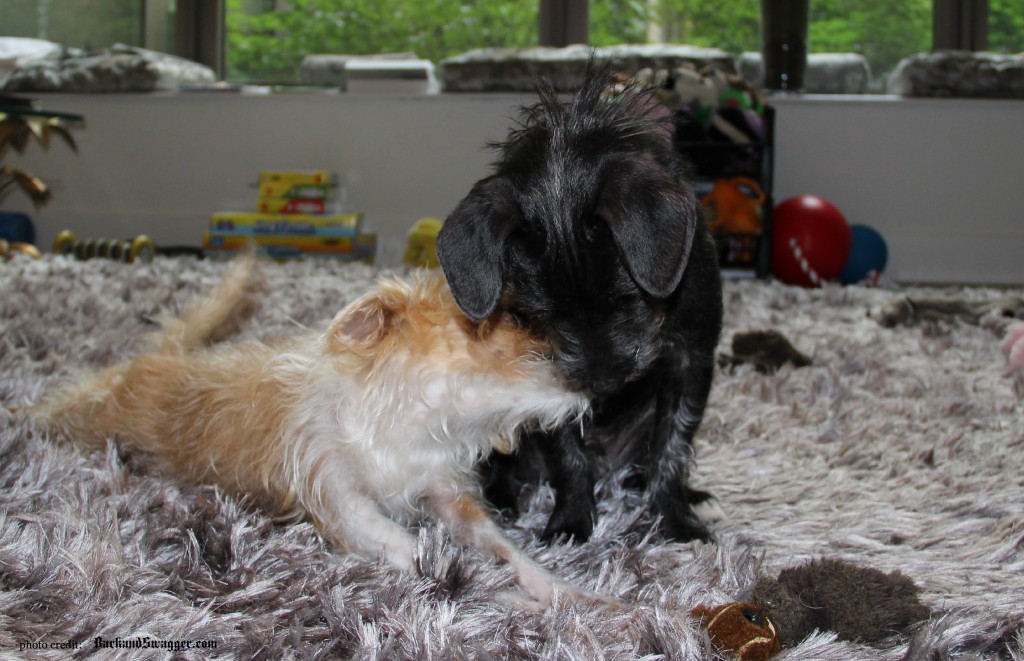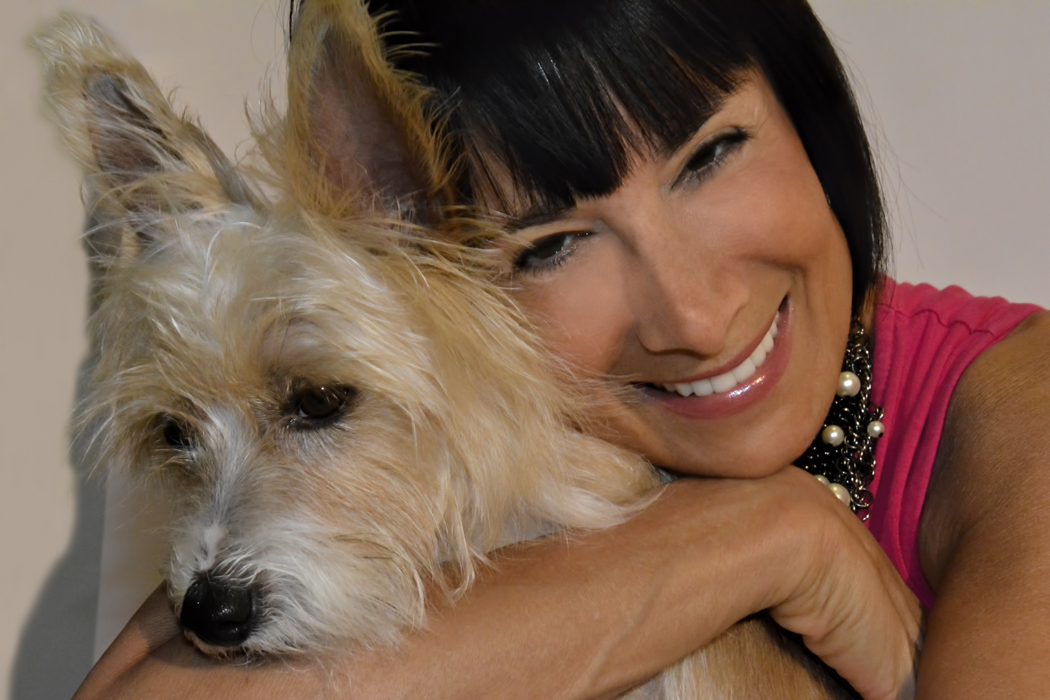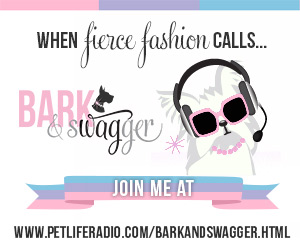Affiliate Links
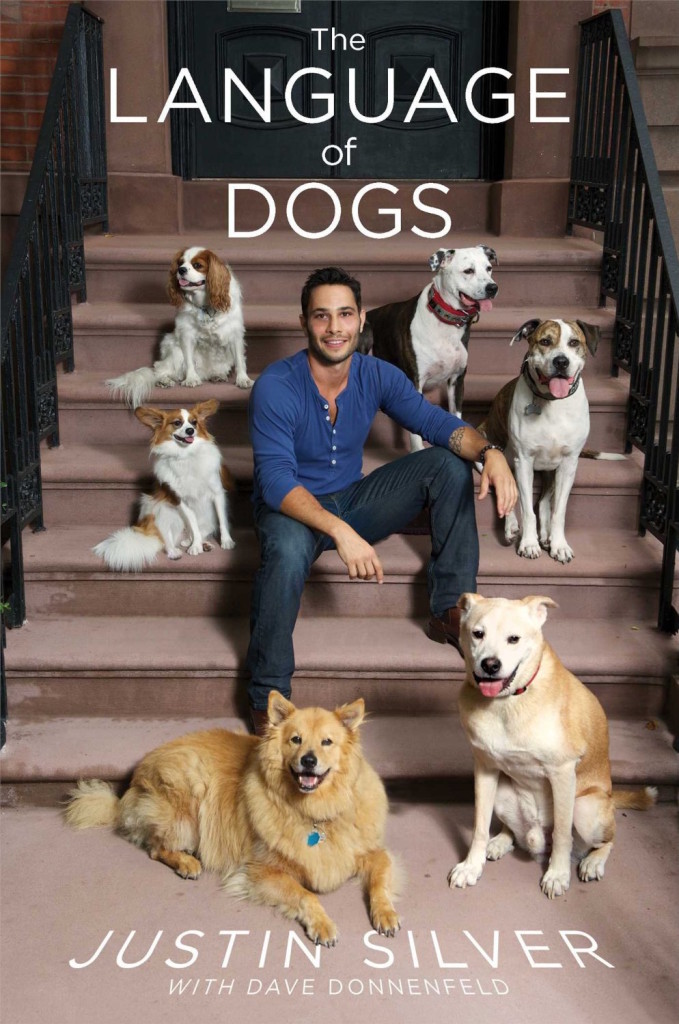
Call me crazy, but some of the best training advice I’ve received are these three simple words: Keep it fluffy. That’s how dog trainer, Justin Silver, puts it when he talks about the energy we communicate to our dogs. The CBS-TV Dogs in the City star sat down with me recently to talk about how our dogs think and learn, topics he covers in his new book with David Donnenfeld, The Language of Dogs. What follows is how Justin helped us and his top dog training tips.
How Justin Helped Jasper Get Over the Hump
After hearing about Justin Silver and watching his show, I was intrigued about his training methods. So I asked a colleague to introduce us, got his new book and hunkered down to read it. I had an ulterior motive. Our rescue Jasper, who has fear aggression issues, had taken over our lives since we took him home 8 months ago. Our wonderful trainer, Maggie Wood, had taken us from not being able to walk Jasper on the street – he’d shriek bark and lunge at people and dogs – to having a much more manageable dog. But, we were stalled and I wanted to see if we could get Jas over the hump of total unpredictability.
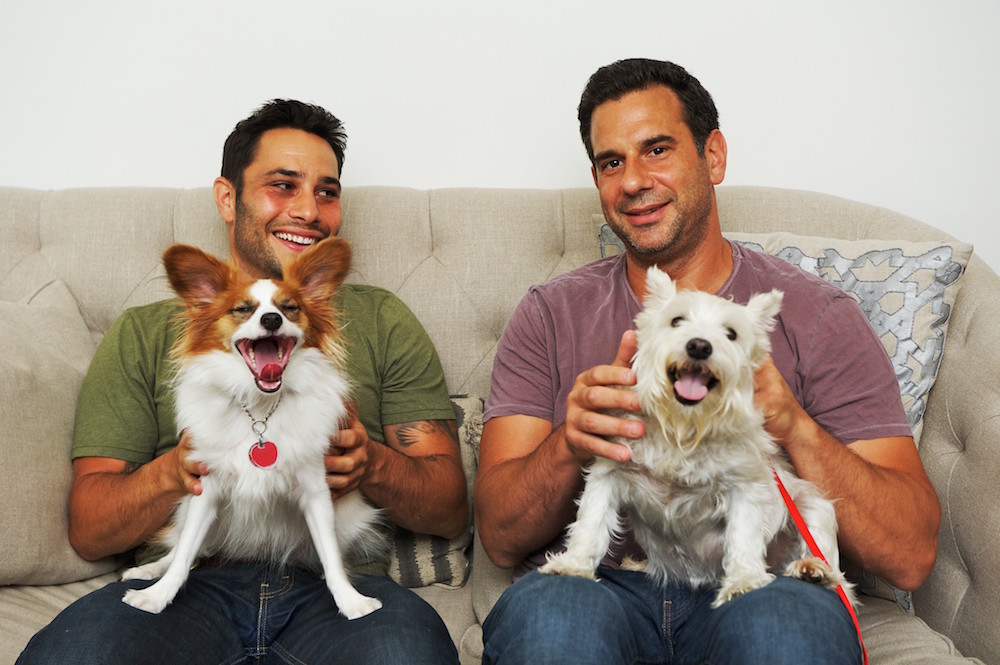
Justin & Dave Donnenfeld
The Language of Dogs was a great read. I found it easy to follow the training tips (with great demonstration photos of the techniques), and his sense of humor and no nonsense approach drew me in, not surprising from a one-time stand up comic and personal trainer. Having trained about 500 dogs, Justin has seen it all.
We did our first and only training session with Jasper via Skype. Yup, Skype! Justin was in L.A. working and escaping the brutal NYC winter. My husband shot some video of me walking Jasper and him acting out towards other dogs on the street, and I texted it to Justin prior to our session (what did we do before iPhones and email?). As soon as we connected on Skype, he dove in. Apparently, I was doing several things wrong and not being fluffy was at the heart of it.
He told me that, in the video, my energy was sending the wrong message to my dog. I was tense, almost expecting an outburst, which was true. We never knew when Jasper would go loco and we were honestly afraid he’d bite someone or their dog. But my body posture, the way I was holding his lead, the tone of my voice – all of it was telling Jasper to be tense, too.
In that session, Justin taught me how to hold his lead and walk him. He said we were using the wrong collar and suggested I put Jasper into a Halti Head Harness, which we subsequently changed to a PetSafe Gentle Leader. You know those head harnesses that has a strap around their nose? That made a HUGE difference right away, because I was able to control him “from the cockpit,” as Justin put it, and they are safe and humane. I love the Gentle Leader so much for our dogs (yes, Sophie, too), that I’m going to do a separate post about it and go into detail about how the harness works, what kind of dogs it’s good for and how it helped us with two completely different types of dogs.
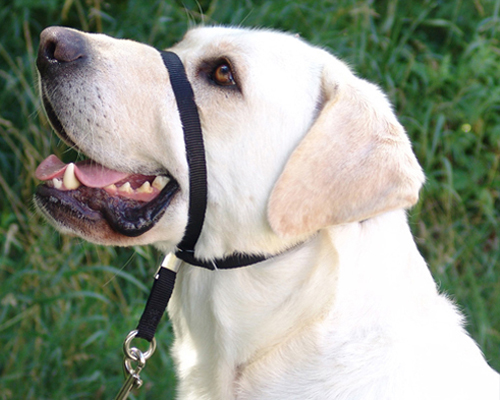
The PetSafe Gentle Leader
Justin also explained his concept of “keeping it fluffy.” He said, “Imagine the most perfect walk with your dog, and live that feeling while you’re walking.” That didn’t mean to check out and be ignorantly blissful. One of the main tenets of his training is to listen with our eyes. What Justin was saying was to manifest a lovely, drama-free walk by sending out that kind of energy to Jasper. Keep the lead a bit loose, smile, sound happy. And, you know what? I saw immediate results when I tried it out on the street. Immediate!
After our Skype lesson, I interviewed Silver and he laid out his training philosophy. It is explained more in depth in The Language of Dogs, which I recommend highly. There’ll be a link to purchase at the end of the post. I’ll also be starting a weekly series with Justin of 10 common training issues dog parents have. Each week, Justin will instruct us as how to solve that week’s problem.
Justin’s Top Training Tips (in his own words)
Silver told me he rarely sees a client more than once or twice. That’s right! He doesn’t believe in working with a trainer long term. Why? He feels that once he teaches dog parents what to do with their particular dogs, as long as we follow through and do it, we will train our own dogs. And, it seems to work!
On to some of his top tips!
* Send the right message!
If I got a tattoo across my chest to sum up my #1 training tip, it would be this: Tell the dog what you want him to do, not what you don’t! The dog is somehow getting a mixed message of what it’s supposed to be doing, through the owners or through the trainer. We’re constantly communicating with them, either through commands or through our behavior. A perfect example is barking at the doorbell. Many people yell at the dog to stop barking. That doesn’t work. An alternative is to take what is instinctive to the dog, alerting you that someone is here, thank the dog for telling you and then redirecting that behavior to something you want them to be doing. That’s giving the dog the message of what to do once they’ve alerted you.
* Keeping it Fluffy

Dogs tend to follow. They’re bred to take cues from our eyes, our voice, to read facial expressions better than primates. When we train, we always have to have the goal in mind. People will use various techniques they’re taught, thinking the techniques alone will lead them to the promised land. You and Jasper are a perfect example. What I suggested is take the leash, hold it and instruct with the end goal in mind – a great walk. What I meant was, our energy when we’re with our dogs is super important. The leash is like a lightning rod. Whatever is going on with you is traveling right down the leash to the dog. Sometimes you have to breathe through it, as if your goal is already happening and the dog will follow. When I say ‘Keep it fluffy,’ I mean a fluffy energy, like a cloud…light. That expression developed when I was walking dogs and teaching people how to do it. They’d grab the leash tight, yank or pull it and the dog would counter pull, and I’d tell them to keep it fluffy, nice and easy like you’re walking on a cloud. That doesn’t mean you fall apart and turn to mush, but you have a real sense of ease, manifesting what you want to occur.
* Give them a job
Imagine if your dog was a human child, like six or seven. You have friends over and he’s running around the house wild, driving everyone crazy. You would most likely pull him aside, have a word, then sit him down and give him something to do. A job; a sense of responsibility. It’s the same with dogs. The job doesn’t have to be something that really needs doing, but the dog thinks it is. For example, if you’re a parent with a stroller, maybe the dog’s job is to walk politely next to the stroller and be like the big brother or the big sister. If treats motivate your dog, maybe you’d bring some with you on the walk and when she’s walking nicely by the stroller, you’d give her praise and a treat. If it’s affection and attention your dog responds to, you’d praise them and give them a pet. So, use what motivates your dog when you’re giving them a job. Oftentimes, all a dog wants is to have attention from you and be with you. If it’s a beautiful day and I’m walking down the street with the dogs, the reward is in the moment. So, it’s slowing both you and the dog down enough to see that, which means putting down the cellphone and paying attention.
* Listen with your eyes

Be observant about the way your dog takes in information and what they’re driven to do. For example, sometimes the owner of a high energy dog that doesn’t listen will try to quash that behavior, which can kill its spirit. They don’t realize that what the dog really wants is to interact with you. You don’t want to suppress that drive, you want to redirect it to other behaviors. You’ve got your dog’s battery charged…use it. You want food from me? You want affection from me? Here’s what you need to do to get it. Pay attention to what motivates your dog and use that to get him to do what you want, so he can get what he wants, too.
* No Free Lunch
An emotionally healthy dog has a clear understanding of its role in the household. This begins with the knowledge of who is in charge. In order to give a timid dog confidence, the dog needs to understand that it is not in control of the household. The same holds true for an overbearing dog, or a dog that exhibits “dominant” behavior. All of these behaviors reek of anxiety and desperation for instruction. The most important thing for a dog to understand is that we are the rightful owner of treats, chew sticks and squeeze toys, and that we decide when the belly rubs get doled out. When your dog has learned this information, you will have a calmer and happier dog. Why? Because your dog has something to work for that will allow it to perform one of it’s biological imperatives. Think about it this way: If you get a check every month from an anonymous donor, you’ll likely worry that one day the checks will stop coming. However, if you’re confident that you have earned and will continue to earn this check, you will not have cause for concern. It is healthy for a dog to know for whom and for what they are working.
* Structured play and structured activities
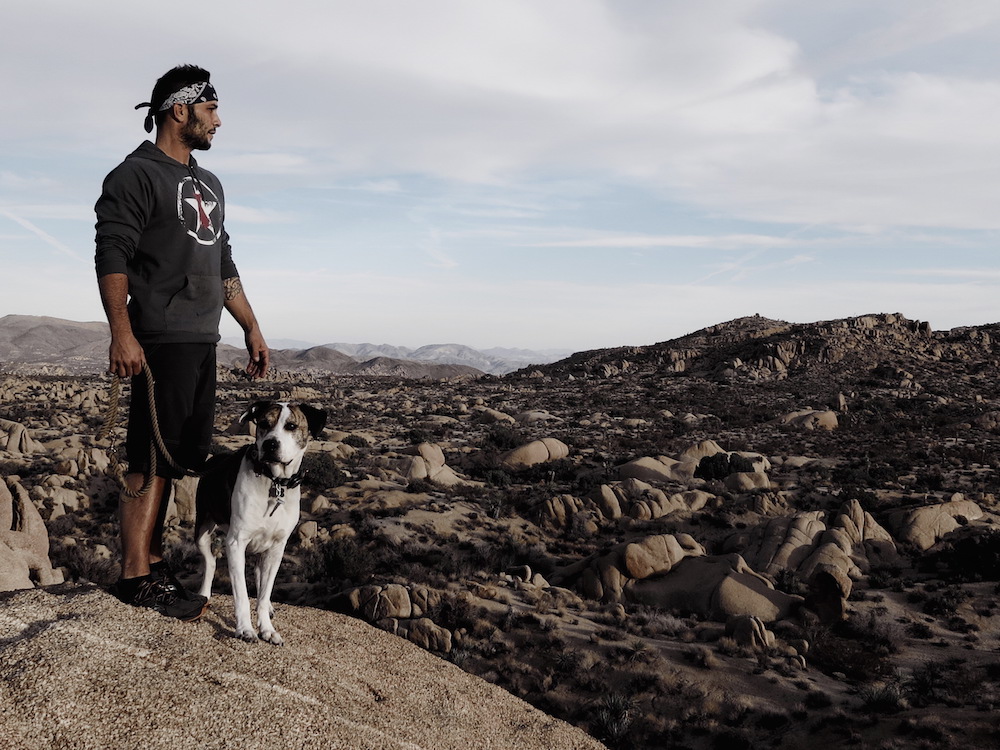
These are key. Everything you do with your dog is an opportunity to train. There’s a big difference between letting a dog run around the backyard, going absolutely crazy to burn off steam and taking a walk on leash with you. With structured play, a dog needs to follow a certain protocol to get what it wants. It reduces anxiety and lets the dog know what is expected of her. Hikes, games like fetch or tug of war with the drop it command, frisbee, or specific playdates where there are rules and regulations are all good. A lot times, people don’t realize their method of exercising the dog can amp them up and teach them more bad habits. I see that in the dog park; there are people who let their dogs do whatever they want, and there are people who have some rules. The dogs who have some rules are going to get the benefit of burning off their energy without amping up their anxiety.
* Master your body

The way we hold our bodies sends a message to our dogs. Dogs are constantly trying to pick up signals from us and are masters at reading our body language. They’re never trying to dominate us; they’re trying to get what they want and figure out what we want. When training, it’s almost like you’re teaching English to a baby or putting together dance moves. You want to say command words very clearly, very deliberately, and give hand signals with a body posture that is also very concise. Think of an orchestra conductor. You see how he stands; his posture, how he holds that baton. He wants to be very crisp and concise because variations can mean something different to his orchestra. So, I tell people to look at their body and listen to their voice; how they’re communicating. With talk, less is more. Make the keywords [the command word(s)] all you say. Mushing is what I call the opposite of this. The best interaction between a dog and dog parent is like dance partners. You lead with the signals and words and he follows seamlessly.
There’s so much more…
These are some of the key aspects of what Justin teaches, but there’s so much more in the book…way too much to include here. Linking, luring, the 80/20 rule, and the critical how to introduce your dog to other dogs and humans are just a few.
I asked Justin if, in the hundreds he’s trained, has he had dogs he just couldn’t “fix”?
“Yes, there have been dogs I’ve had a very difficult time with. Certain dogs are going to prove [a term explained in the book] only a certain amount. If I have a dog that’s had an aggressive, tough background, it’s late in their life and they’re living in New York City with lots of triggers, how much better can I get that dog? Sometimes, the best thing for them is to go live on a farm or in a much more peaceful environment, where they’re not triggered by the things that cause them anxiety. I have a client who’s dog is really calm when he’s at her parent’s house in Pennsylvania, but when he’s back in NYC, he’s so anxious he starts attacking dogs in the elevator. We’ve gotten that dog as far as we can get him, where he’s not attacking dogs in the elevator, but he’s still really nervous. We’ve made as much improvement as we can, based on what that owner is willing to do and the environment the dog lives in. So, there’s things I can do and I can not do and people need to have realistic expectations of what the dog is capable of.”
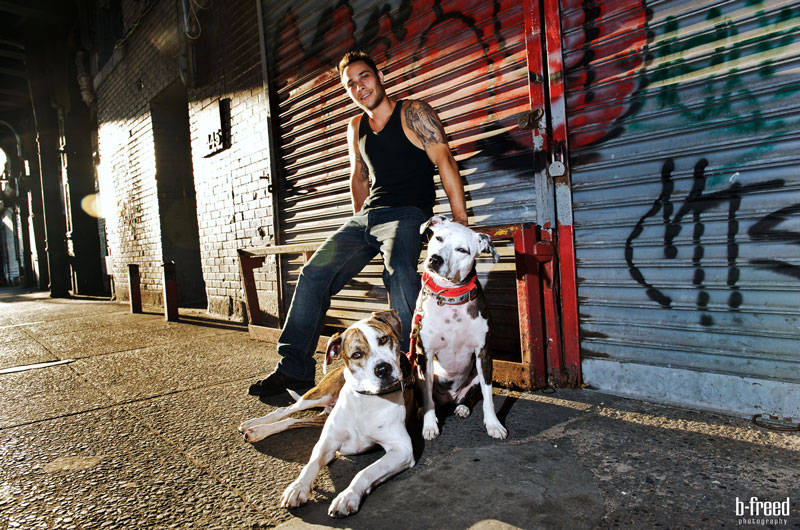
With Pacino & Chiquita
A message to dog parents…
Justin is a big supporter of adopt, don’t shop. His two dogs – Pacino and Chiquita – are both rescues and he’s done a lot of work with shelters. So, he knows from what he speak when he says, “If people took the time to learn how a dog thinks and learns, the proper way to introduce them to people and other dogs, instead of getting a dog and thinking they’ll just wing it, a lot of dogs’ lives would be saved. We’re basically dog re-trainers. I get called when the last three trainers haven’t worked and the owner thinks the dog is hopeless. Well, is the dog hopeless or is your method of teaching not the best one for this particular dog? It’s a trainer’s job and a dog owner’s job to find out the best means of training that specific animal that’s in front of them and, with that, the epidemic of dogs that show up in shelters with behavior problems would vastly go away.”
(photo credit for all photos: Brian Friedman)
Stay tuned for Justin’s favorite training tools, tomorrow, and an upcoming training series on the top 10 most common problems.
To purchase Justin Silver’s book, The Language of Dogs, go here.
To follow Justin on Facebook.
To follow Justin on Twitter.
To follow Justin on Instagram.
What is your biggest training challenge?
